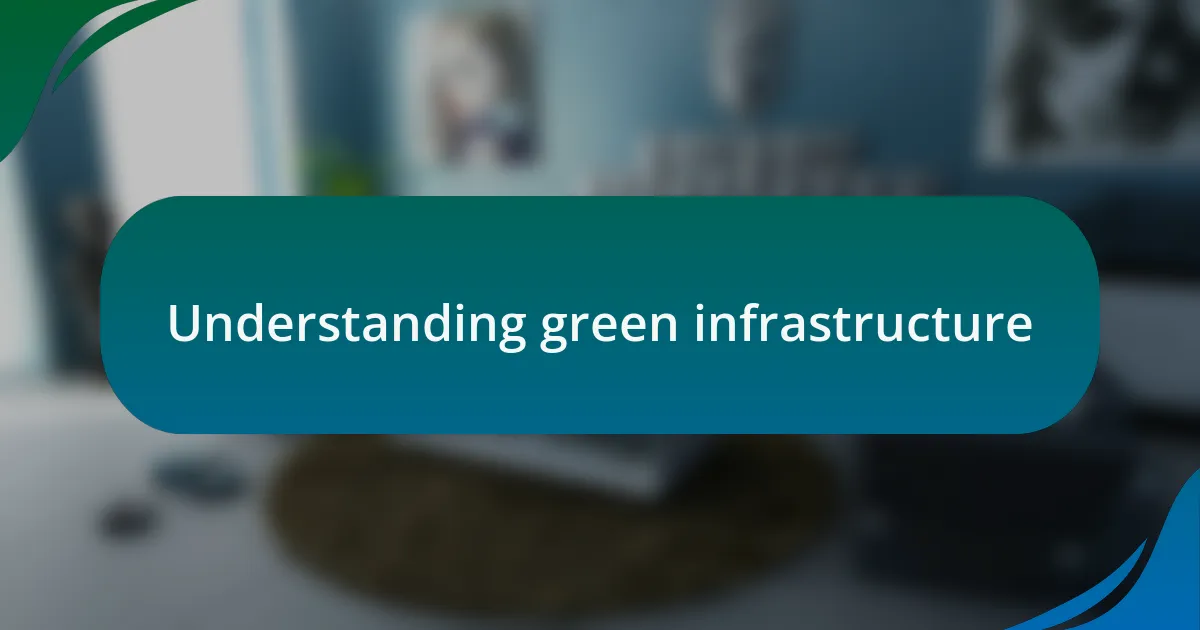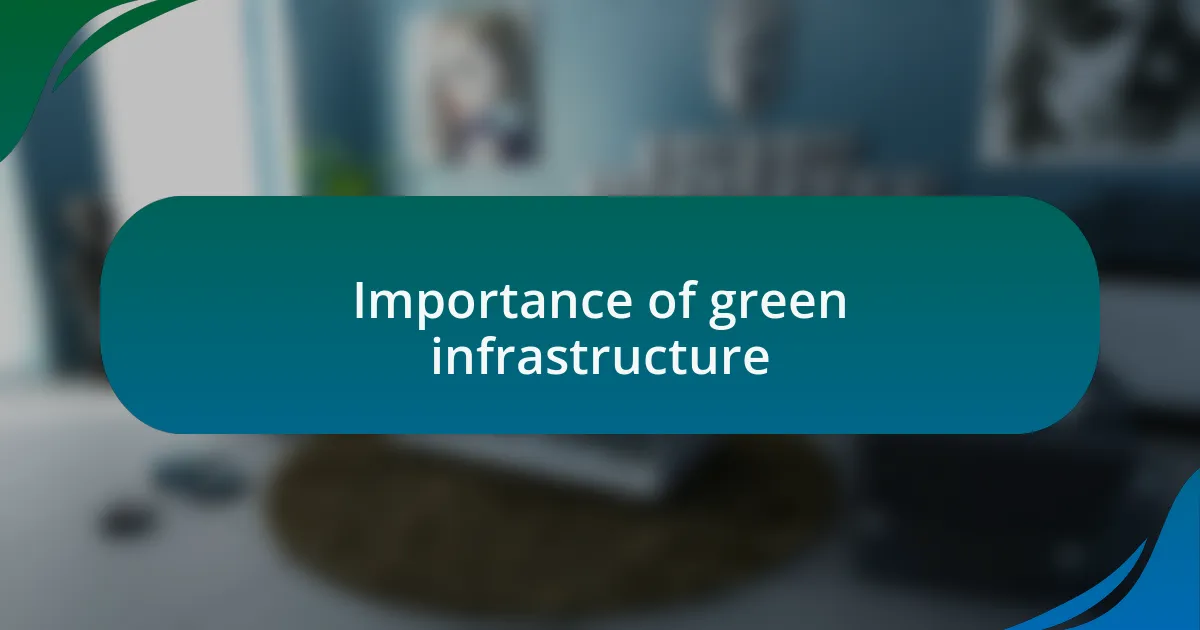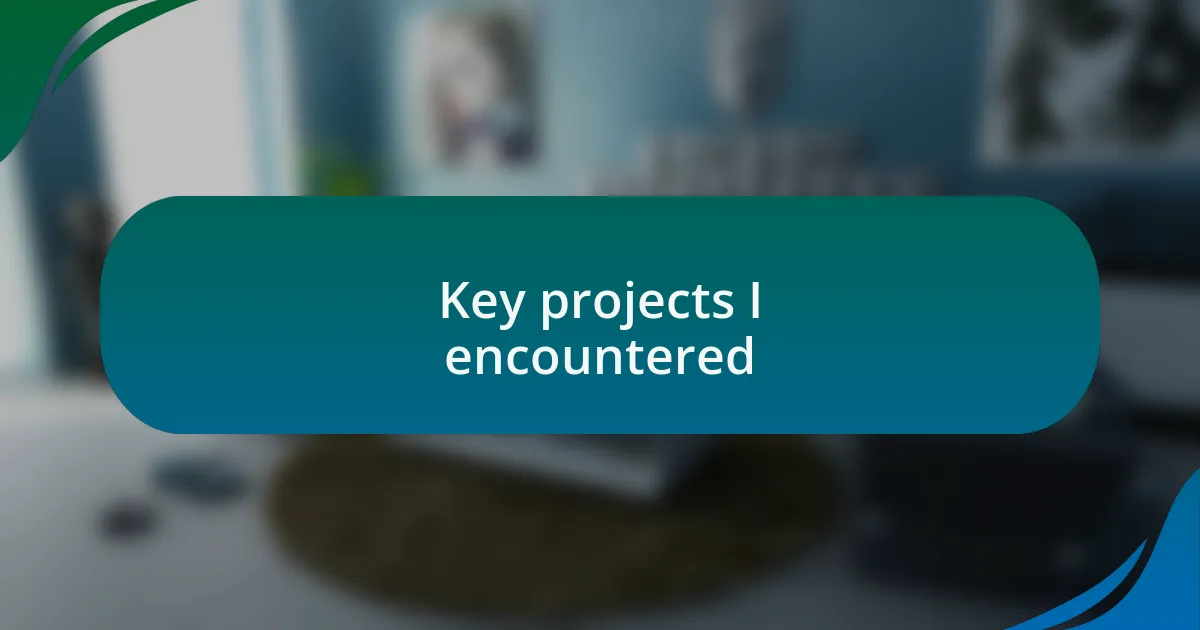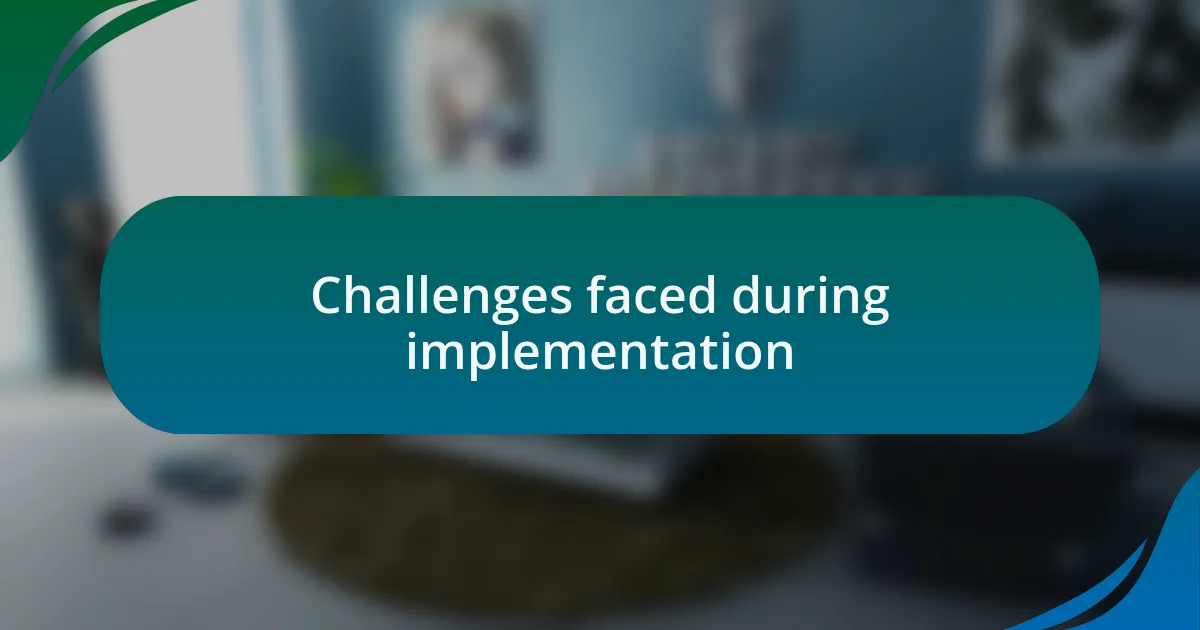Key takeaways:
- Green infrastructure combines natural systems with urban environments, enhancing city resilience and quality of life.
- Community involvement and education are crucial for successful implementation and maintaining green initiatives.
- Flexibility and collaboration can lead to innovative solutions when facing unexpected challenges in project execution.
- Funding is a significant challenge, highlighting the need for creative financing and community partnerships to realize green infrastructure projects.

Understanding green infrastructure
Green infrastructure embodies an innovative approach to urban planning, seamlessly blending natural systems with human-made environments. I remember my first encounter with a green roof in a bustling city center; it felt like discovering a hidden oasis amidst the concrete jungle. How can such a simple addition transform an ordinary space into a vibrant habitat?
On a recent stroll through a newly developed park, I was struck by how the integration of rain gardens not only beautified the space but also mitigated stormwater runoff. It made me reflect on how these features work tirelessly behind the scenes to protect our urban ecosystems. Isn’t it fascinating how a thoughtful design can influence the health of a city and its inhabitants?
The principles of green infrastructure can feel overwhelming at first, especially with concepts like permeable paving and bioswales. Yet, each element serves a vital purpose in fostering sustainability. From my experience, once you start noticing these features in your surroundings, you begin to appreciate the delicate balance they maintain between nature and urban life.

Importance of green infrastructure
Green infrastructure plays a crucial role in enhancing urban resilience. I remember visiting a city that prioritized green corridors and parks, observing how these spaces served not just as recreational areas, but also as vital buffers against extreme weather events. Have you ever stopped to consider how trees can lower temperatures, improve air quality, and contribute to our mental well-being?
Another striking aspect is how green roofs can reduce energy consumption in buildings. I once worked on a project where we implemented a green roof system, and the difference in energy efficiency was remarkable. It felt rewarding to see how integrating vegetation on rooftops not only provided insulation but also supported biodiversity—helping local bees and birds thrive in an urban setting.
Finally, let’s not overlook the social benefits of green infrastructure. I’ve attended community events held in green spaces and witnessed firsthand how they foster connection among residents. When these areas are thoughtfully designed, they become gathering spots that enhance community engagement, making cities not just livable, but truly enjoyable. Isn’t it amazing how a focus on green can create spaces that nurture both nature and community?

Key projects I encountered
One of the standout projects I encountered was a revitalization effort in an underutilized area of the city, transforming vacant lots into vibrant community gardens. As I strolled through the neighborhood post-renovation, I couldn’t help but notice the smiles on faces—families tending to plants and children playing among the greenery. It made me wonder: how often do we overlook the potential within neglected spaces?
Another noteworthy experience was at a local university, where they installed a rain garden to manage stormwater runoff. I remember feeling a sense of pride as students took the initiative to maintain it, learning about environmental stewardship in the process. It struck me that these projects not only address practical issues but also instill a sense of responsibility and ownership in the community.
In my travels, I’ve also seen a mixed-use development that seamlessly integrated green infrastructure with urban living. Walking through it felt different; the flow of energy from the integration of green walls and public parks created an uplifting atmosphere. It made me realize how essential it is to design spaces that prioritize both nature and human interaction—couldn’t we all benefit from a little more greenery in our daily lives?

Challenges faced during implementation
Implementing green infrastructure often comes with its own set of challenges, and I experienced this firsthand during a project aimed at creating a green rooftop on a local building. I vividly remember the frustration when we encountered unexpected structural issues that delayed progress, making me reflect on the importance of thorough pre-planning. Have you ever felt the weight of unexpected hurdles during a project? It can be disheartening, yet it’s a crucial part of the learning process.
Another significant obstacle I faced was community buy-in. While many residents were excited about a proposed urban park, there were also skeptics worried about maintenance costs. I found myself spending hours in community meetings, discussing not just the benefits but addressing those genuine concerns. That experience taught me that communication is key; it’s about building trust and understanding the community’s perspective to truly engage them in the process. How often do we underestimate the power of listening?
Funding is another critical challenge that cannot be overlooked. I remember collaborating on a project that required a substantial budget for green infrastructure elements, and securing those funds was no small feat. Nothing can send you into a spiral faster than realizing that you’re lacking the financial resources to bring your vision to life. This struggle made me appreciate the importance of innovative funding solutions and community partnerships, which can make all the difference in transforming an idea into reality.

Lessons learned from my experience
Throughout my journey with green infrastructure, one of the most profound lessons I learned was the necessity of flexibility. During one project, I vividly recall the moment when a last-minute change in regulations forced us to rethink our entire design. It felt like a gut punch at first, but it ultimately taught me that adaptability can lead to innovative solutions. Have you ever had to pivot unexpectedly? Those moments can be uncomfortable but often lead to unexpected creativity.
I also discovered the immense value of collaboration. During the planning stages of another project, I partnered with local ecologists and urban planners, and this multidisciplinary approach opened my eyes to different perspectives. I remember the light bulb moment when we merged our ideas into a more sustainable design that exceeded everyone’s expectations. It’s remarkable how much richer the process becomes when you lean into collaboration. Have you ever witnessed the beauty of teamwork in action?
Lastly, my experiences reinforced the idea that education and awareness are vital components of success. I organized workshops to explain the benefits of green infrastructure to the community, and the enthusiasm was infectious. Seeing residents transition from skepticism to eagerness made me realize that when people understand the potential impact, they become powerful advocates. What if every project included educational outreach from the start? I believe it would pave the way for more successful green initiatives.